Podcast: Play in new window | Download
Subscribe: Apple Podcasts | RSS
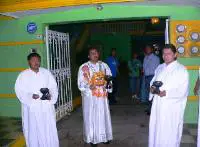 The town of Catemaco in the Mexican state of Veracruz is located at a crossroads of geography, time and space. The name of this lakeside jungle town of 35,000 people comes from the language of the ancient Aztecs, Nahuatl, and roughly means, “The Place of the Burning House.” Long cut off from the rest of Mexico, the railroad first came here in 1912 and roads connecting it with the rest of the state of Veracruz only in the 1950s. Catemaco’s remoteness and its seemingly indifferent attitude toward the outside world allowed for the development of a unique ambience in the town. From pre-Hispanic times, from probably before the Aztecs gave the region its name, the area has been known as a place of magic and sorcery. The arrival of successive waves of people to the area has added to the magical nature of Catemaco. While still mostly indigenous in the century or so after the Spanish Conquest, the area began to receive escaped slaves, and along with them, their African beliefs systems and cultures. When European civilization caught up with Catemaco, the Spanish introduced Catholicism to a population that was a blend of several native groups and various African nationalities. The already-established class of chamanes or sorcerers in the town incorporated Catholic saints and rituals into their magical practices. In addition to the more occult and spiritual aspects of the town, the area has long been a center for herbalism, as many different plants with curative properties grow abundantly in the jungles surrounding the town of Catemaco. Cures combining different plants and plant extracts have provided relief for hundreds of different ailments, and the indigenous medicinal plant wisdom runs deep. Over the years, the herbalist traditions have melded with the overlapping spiritual belief systems found here. Centuries later the blend of traditions is often hard to trace, but most recognize that what is happening in Catemaco is very powerful and unique to the region.
The town of Catemaco in the Mexican state of Veracruz is located at a crossroads of geography, time and space. The name of this lakeside jungle town of 35,000 people comes from the language of the ancient Aztecs, Nahuatl, and roughly means, “The Place of the Burning House.” Long cut off from the rest of Mexico, the railroad first came here in 1912 and roads connecting it with the rest of the state of Veracruz only in the 1950s. Catemaco’s remoteness and its seemingly indifferent attitude toward the outside world allowed for the development of a unique ambience in the town. From pre-Hispanic times, from probably before the Aztecs gave the region its name, the area has been known as a place of magic and sorcery. The arrival of successive waves of people to the area has added to the magical nature of Catemaco. While still mostly indigenous in the century or so after the Spanish Conquest, the area began to receive escaped slaves, and along with them, their African beliefs systems and cultures. When European civilization caught up with Catemaco, the Spanish introduced Catholicism to a population that was a blend of several native groups and various African nationalities. The already-established class of chamanes or sorcerers in the town incorporated Catholic saints and rituals into their magical practices. In addition to the more occult and spiritual aspects of the town, the area has long been a center for herbalism, as many different plants with curative properties grow abundantly in the jungles surrounding the town of Catemaco. Cures combining different plants and plant extracts have provided relief for hundreds of different ailments, and the indigenous medicinal plant wisdom runs deep. Over the years, the herbalist traditions have melded with the overlapping spiritual belief systems found here. Centuries later the blend of traditions is often hard to trace, but most recognize that what is happening in Catemaco is very powerful and unique to the region.
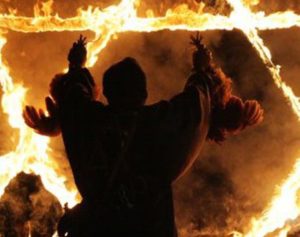 The locals have realized this, too. In 1970, the Brujo Mayor, or Head Sorcerer, of Catemaco, a man named Gonzalo Aguirre, decided to get together with the rest of the spiritual and magical practitioners in the town to put together the first witch’s conference. Aguirre inherited the position from a man named Manuel Utrera, who served as the town’s head brujo for many decades and had his own ideas of uniting the various magical practitioners of the area, but never acted on those ideas. While the whole modern concept of a “witch” has been traditionally female, the majority of the Maestros en ciencias ocultas , or “Masters in Occult Sciences,” of Catemaco, are men. This may be a result of the heavy influence of the indigenous and African cultures on the area’s magical and occult traditions, which favored men as spiritual leaders and healers. The Aztecs had nearly 40 types of formal classifications for sorcerers and specialists of various magical arts, and all the roles were filled by men. The tradition of the African village “witch doctor” was also a traditionally male role. So, Catemaco now has institutionalized a “brotherhood” of male witches called the Trece Brujos, or Thirteen Sorcerers. Without being too tripped up on trying to define the nuances existing among the titles of the various people involved, the terms used to describe the various practitioners in Catemaco are numerous. Some prefer the English equivalent of “witch,” “sorcerer,” “warlock,” “shaman,” or “healer.” The most commonly used Spanish word is brujo which translates to “male witch,” in English. As previously mentioned, since 1970, the sorcerers of all different kinds have gotten together to have an annual conference. The original name of the gathering was El Congreso Nacional de Brujos de Catemaco, or in English, The National Congress of Sorcerers of Catemaco. Even into the 21st Century, the Catholic Church has always been against any gatherings of witches. Because of harsh criticism from local and regional Catholic Church officials and the bad PR that went along with it, the town’s coven of 13 decided to change the name of the gathering in 2008. The newly rebranded annual festival is now known as Fiesta de Ritos, Ceremonias y Artesanías Mágicas, or in English, the Festival of Magical Rites, Ceremonies and Handcrafts. It now attracts hundreds of witches, sorcerers, curanderos, psychics, healers, fortune tellers and many charlatans. Even groups of Central European gypsies, known also as the Rom, come to Catemaco for the festival. Thousands of tourists also participate, and mostly come from other parts of Mexico, although outsiders are arriving in greater numbers with each passing year.
The locals have realized this, too. In 1970, the Brujo Mayor, or Head Sorcerer, of Catemaco, a man named Gonzalo Aguirre, decided to get together with the rest of the spiritual and magical practitioners in the town to put together the first witch’s conference. Aguirre inherited the position from a man named Manuel Utrera, who served as the town’s head brujo for many decades and had his own ideas of uniting the various magical practitioners of the area, but never acted on those ideas. While the whole modern concept of a “witch” has been traditionally female, the majority of the Maestros en ciencias ocultas , or “Masters in Occult Sciences,” of Catemaco, are men. This may be a result of the heavy influence of the indigenous and African cultures on the area’s magical and occult traditions, which favored men as spiritual leaders and healers. The Aztecs had nearly 40 types of formal classifications for sorcerers and specialists of various magical arts, and all the roles were filled by men. The tradition of the African village “witch doctor” was also a traditionally male role. So, Catemaco now has institutionalized a “brotherhood” of male witches called the Trece Brujos, or Thirteen Sorcerers. Without being too tripped up on trying to define the nuances existing among the titles of the various people involved, the terms used to describe the various practitioners in Catemaco are numerous. Some prefer the English equivalent of “witch,” “sorcerer,” “warlock,” “shaman,” or “healer.” The most commonly used Spanish word is brujo which translates to “male witch,” in English. As previously mentioned, since 1970, the sorcerers of all different kinds have gotten together to have an annual conference. The original name of the gathering was El Congreso Nacional de Brujos de Catemaco, or in English, The National Congress of Sorcerers of Catemaco. Even into the 21st Century, the Catholic Church has always been against any gatherings of witches. Because of harsh criticism from local and regional Catholic Church officials and the bad PR that went along with it, the town’s coven of 13 decided to change the name of the gathering in 2008. The newly rebranded annual festival is now known as Fiesta de Ritos, Ceremonias y Artesanías Mágicas, or in English, the Festival of Magical Rites, Ceremonies and Handcrafts. It now attracts hundreds of witches, sorcerers, curanderos, psychics, healers, fortune tellers and many charlatans. Even groups of Central European gypsies, known also as the Rom, come to Catemaco for the festival. Thousands of tourists also participate, and mostly come from other parts of Mexico, although outsiders are arriving in greater numbers with each passing year.
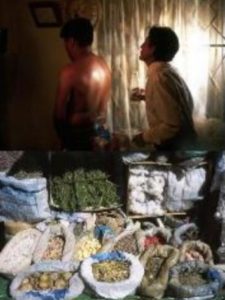 The annual celebration always takes place over the course of 3 days starting at the stroke of midnight on the last Friday of March. The brujos chose that time of year, the early spring, because it corresponded with many renewal and rebirth rituals that had been practiced and celebrated in different forms in the area for hundreds or possibly thousands of years. The witch fiesta always kicks off with a black mass on the shores of Lake Catemaco. The mass includes a public burning of a 10-foot star, usually 6-pointed. The burning of the star, according to the current Brujo Mayor of the town, Jaime Bervon Azamar, is so that, “both the good and evil gates will open.” During the festival, Bervon states, both black and white magic are performed, and the rituals can take on many forms. Bervon started as a sorcerer’s apprentice at age 13 and specializes in exorcisms and what are termed limpias or spiritual cleansings to rid a client of bad vibrations or to restore one’s aura to a higher frequency. A standard Catemaco limpia involves a chicken egg, sprigs of rosemary combined with a fragrant local jungle plant, candles, a glass of water and either incense or perfume. To start, the practitioner will whisper several prayers to the Catholic saints while he lights the candles and prepares the bundles of herbs. He then rubs the client’s body with the plant bundle, continuing the prayer whispers. After finishing the plant rub-down, the sorcerer takes the intact egg and gently rubs it over the person’s body much as he does with the bundle of herbs. After rubbing down the person’s body with the egg, he then cracks the egg into a glass of water. This is the divinatory part of the limpia. The brujo will examine the contents of the glass, and by looking at the patterns of the cracked egg in water he will give the client advice about the future or will suggest different courses of action that he or she will need to take. In that glass the person performing the limpia can also see the spiritual causes of the troubles that his client may be having and will make suggestions or prescribe herbal remedies to get the person back into balance. A traditional Catemaco limpia usually ends with the spraying of perfume or the lighting of a sweet incense to mark a new and clean beginning for the client. A kind of mass limpia occurs during the first Friday of the annual Catemaco fiesta at a place called Nanciyaga. Nanciyaga is a clearing in the jungle surrounded by rows of stone seats, like bleachers in a miniature sports stadium, where shamans light pots of sweet herb bundles and chant prayers for a reverent audience. No archaeological investigations have ever been done at the Nanciyaga site, but locals state that the location has been a place of ritual and worship since pre-Conquest times.
The annual celebration always takes place over the course of 3 days starting at the stroke of midnight on the last Friday of March. The brujos chose that time of year, the early spring, because it corresponded with many renewal and rebirth rituals that had been practiced and celebrated in different forms in the area for hundreds or possibly thousands of years. The witch fiesta always kicks off with a black mass on the shores of Lake Catemaco. The mass includes a public burning of a 10-foot star, usually 6-pointed. The burning of the star, according to the current Brujo Mayor of the town, Jaime Bervon Azamar, is so that, “both the good and evil gates will open.” During the festival, Bervon states, both black and white magic are performed, and the rituals can take on many forms. Bervon started as a sorcerer’s apprentice at age 13 and specializes in exorcisms and what are termed limpias or spiritual cleansings to rid a client of bad vibrations or to restore one’s aura to a higher frequency. A standard Catemaco limpia involves a chicken egg, sprigs of rosemary combined with a fragrant local jungle plant, candles, a glass of water and either incense or perfume. To start, the practitioner will whisper several prayers to the Catholic saints while he lights the candles and prepares the bundles of herbs. He then rubs the client’s body with the plant bundle, continuing the prayer whispers. After finishing the plant rub-down, the sorcerer takes the intact egg and gently rubs it over the person’s body much as he does with the bundle of herbs. After rubbing down the person’s body with the egg, he then cracks the egg into a glass of water. This is the divinatory part of the limpia. The brujo will examine the contents of the glass, and by looking at the patterns of the cracked egg in water he will give the client advice about the future or will suggest different courses of action that he or she will need to take. In that glass the person performing the limpia can also see the spiritual causes of the troubles that his client may be having and will make suggestions or prescribe herbal remedies to get the person back into balance. A traditional Catemaco limpia usually ends with the spraying of perfume or the lighting of a sweet incense to mark a new and clean beginning for the client. A kind of mass limpia occurs during the first Friday of the annual Catemaco fiesta at a place called Nanciyaga. Nanciyaga is a clearing in the jungle surrounded by rows of stone seats, like bleachers in a miniature sports stadium, where shamans light pots of sweet herb bundles and chant prayers for a reverent audience. No archaeological investigations have ever been done at the Nanciyaga site, but locals state that the location has been a place of ritual and worship since pre-Conquest times.
In an online interview, Mexican author and witchcraft expert José Gil Olmos offered his opinions of the Catemaco witch festival. Olmos is an investigative journalist for the Mexico-City-based news magazine Proceso and the author of the acclaimed two-part book Los Brujos del Poder, or in English, “The Witches of Power.” Olmos states with some disappointment, “The congress has become a tourist event and the mayor usually throws a few nighttime shows in the program so that people can dance and get drunk. So, if you go looking for a surprising sorcerers’ congress, you end up attending a show.” He also said, “A lot of the witches are con artists, so you have to ask around for the real ones.” Later in the interview, Olmos countered his disappointment by affirming, “The first night is special. That’s when both black magic and white magic rituals take place and, considering Catemaco is a beautiful place, it is worthwhile visiting.”
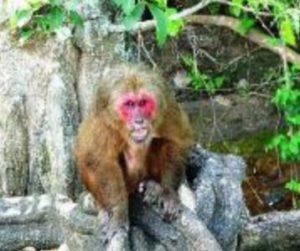 The surrounding mountainous jungle area is indeed beautiful, and the Mexican government has set aside thousands of acres for the Los Tuxtlas Biosphere Reserve to protect the incredible variety of plant and animal life in and around the Lake Catemaco area. Curiously, part of the reserve is the tiny Isla de los Changos in the center of the lake. The island is so named because it is overrun by a colony of stump-tailed monkeys imported from Thailand in 1974. The alien monkeys are not the only strange creatures in the region according to the locals. Catemaco residents believe that the surrounding jungle is home to chaneques, a mythical race of mischievous elves. For more information on chaneques, please see Mexico Unexplained episode number 59: https://mexicounexplained.com//alux-chaneque-mexicos-elusive-elves/ They also believe that the dense forests serve as perfect hiding places for naguales, the animal forms of sorcerers who have decided to shape-shift. For more information on naguales, please see Mexico Unexplained episode number 36: https://mexicounexplained.com//the-nagual/ Some of the natural formations in the surrounding areas are also considered sacred places. These places include the mountain called Mono Blanco and a natural grotto in the middle of the jungle full of evil spirits appropriately called The Devil’s Cave. It was on Mono Blanco where the former head sorcerer of Catemaco, Gonzalo Aguirre, supposedly met Satan himself and made several deals with him. So, the rumor goes.
The surrounding mountainous jungle area is indeed beautiful, and the Mexican government has set aside thousands of acres for the Los Tuxtlas Biosphere Reserve to protect the incredible variety of plant and animal life in and around the Lake Catemaco area. Curiously, part of the reserve is the tiny Isla de los Changos in the center of the lake. The island is so named because it is overrun by a colony of stump-tailed monkeys imported from Thailand in 1974. The alien monkeys are not the only strange creatures in the region according to the locals. Catemaco residents believe that the surrounding jungle is home to chaneques, a mythical race of mischievous elves. For more information on chaneques, please see Mexico Unexplained episode number 59: https://mexicounexplained.com//alux-chaneque-mexicos-elusive-elves/ They also believe that the dense forests serve as perfect hiding places for naguales, the animal forms of sorcerers who have decided to shape-shift. For more information on naguales, please see Mexico Unexplained episode number 36: https://mexicounexplained.com//the-nagual/ Some of the natural formations in the surrounding areas are also considered sacred places. These places include the mountain called Mono Blanco and a natural grotto in the middle of the jungle full of evil spirits appropriately called The Devil’s Cave. It was on Mono Blanco where the former head sorcerer of Catemaco, Gonzalo Aguirre, supposedly met Satan himself and made several deals with him. So, the rumor goes.
For those wishing for a perhaps more authentic spiritual experience with the sorcerers of Catemaco, locals recommend visiting the town in the off season, and not during festival time. Many brujos have set up offices like medical clinics complete with waiting and examination rooms. Some list their specializations on their storefronts and their business cards. One can see a general practitioner, more commonly known as a Maestro en ciencias ocultas , or “Master in Occult Sciences.” A popular specialist in Catemaco is a Yorbatero, or one who practices a certain type of ritualistic massage. Another one is called a Huesero, who works with a client’s skeletal system much as a chiropractor would in Western medicine. The 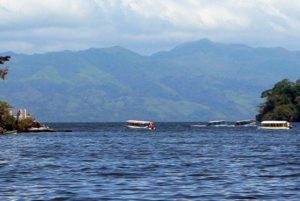 specialties are as diverse as human ailments and concerns. If services of practitioners are too costly, amulet shops in the town also serve people looking for that special charm that will do the trick. Most people who go to Catemaco to visit the sorcerers are looking for guidance and reassurance. Those who visit to partake in the so-called “black magic,” usually wish to curse or destroy their enemies. One of the governors of Veracruz, Fidel Herrera Beltrán, proposed setting up a national school of witchcraft in the town, but it never got off the ground because of too much opposition from both the Catholic Church and the general public. Nevertheless, there is something for everyone in Catemaco and the town boasts of hosting many celebrities and politicians. The current president of Mexico, Andrés Manuel López Obrador, was said to have been a frequent visitor of certain high-ranking brujos in the town. Although it is unknown if he is still in contact with any of the sorcerers of Catemaco, it is said that the president may have used them in his inauguration ceremonies at the Zocalo in Mexico City on December 1, 2018 witnessed by millions. Perhaps the power of the sorcerers of Catemaco is more far-reaching than anyone could imagine. For now, they remain a focus of curiosity and the standard bearers of a long and complicated tradition.
specialties are as diverse as human ailments and concerns. If services of practitioners are too costly, amulet shops in the town also serve people looking for that special charm that will do the trick. Most people who go to Catemaco to visit the sorcerers are looking for guidance and reassurance. Those who visit to partake in the so-called “black magic,” usually wish to curse or destroy their enemies. One of the governors of Veracruz, Fidel Herrera Beltrán, proposed setting up a national school of witchcraft in the town, but it never got off the ground because of too much opposition from both the Catholic Church and the general public. Nevertheless, there is something for everyone in Catemaco and the town boasts of hosting many celebrities and politicians. The current president of Mexico, Andrés Manuel López Obrador, was said to have been a frequent visitor of certain high-ranking brujos in the town. Although it is unknown if he is still in contact with any of the sorcerers of Catemaco, it is said that the president may have used them in his inauguration ceremonies at the Zocalo in Mexico City on December 1, 2018 witnessed by millions. Perhaps the power of the sorcerers of Catemaco is more far-reaching than anyone could imagine. For now, they remain a focus of curiosity and the standard bearers of a long and complicated tradition.
REFERENCES
The catemaco.info website
Mexconnect article on Catemaco.
